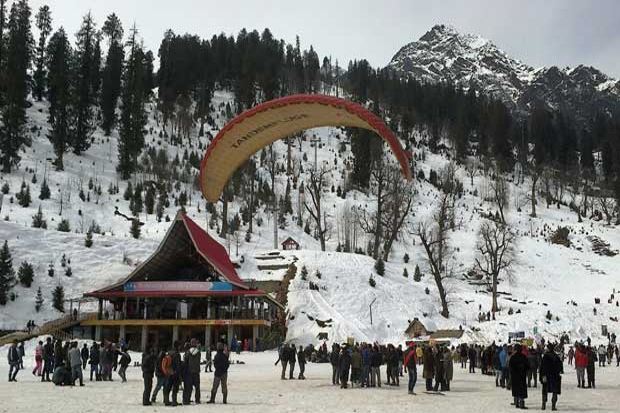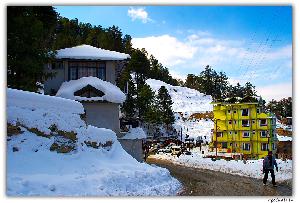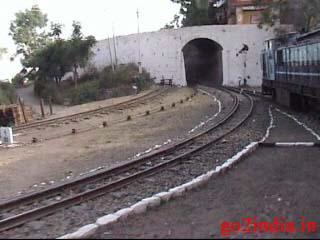Sar pass YHAI Himalaya trekking checklist
· Hair cut: Better to take short hair cut few days before leaving the station to trekking base camp. This helps in less maintenance of hair and free from combining during trekking. We can avoid carrying additional items like comb. As we will be wearing monkey cap or a normal cap during the entire trekking, cannot think of a dressed hair.
· Nails cutting: It is important to cut all nails just before starting to trek at base camp. This is required against personal hygiene and avoids collection of dust at the edges of nails during trekking.
· Two color passport sized photos: These are required (one for ID card and one is to be handed over to YHAI official) during registration process while reporting at base camp.
· Original YHAI Membership card: This is to be shown during registration at base camp on reporting. New members who have not received their membership card, can show the receipt given by YHAI office against the money paid for membership.
· Medical form signed by MBBS (or above) doctor: There is a fixed format available in YHAI website. Members who enroll their name for trekking online, will get the admit card instantaneously. So, medical form duly signed by an MBBS doctor is to be submitted while reporting at base camp. Members who register their name manually, have to send the medical form duly signed by an MBBS doctor and send those to YHAI head office at New Delhi.
· Admit card: This is a must to get registered to the trek at base camp. Members should check and confirm their date of reporting, group number, registration number etc… carefully.
· Booking receipts, tickets or vouchers for hotels, bus, trains, flights etc… This depends on the individual.
· Rucksack or back pack: A light weight with sufficient space with more number of pockets is very helpful. YHAI also provides a rucksack which is just sufficient for the trek. We found it very convenient and used the same. It is reasonably strong, water resistant, has sufficient number of pockets and light weight.
· Thermal inner wear: A must for Himalayan trekkers who sleep at higher altitudes near ice covered peaks where temperature goes below zero degree Celsius. Both upper and lower are necessary.
· Two full arm and full neck tea shirts: These are used during trekking. Wear one and use as long as possible. Unless it is drenched due to unexpected rain, no need to change.
· Pant (trouser): Better to wear a jean pant. No need to change unless it is drenched. It gets wet during ice sliding. So keep one additional light weight pant to wear for the rest of the trekking. Better not to use a pant with more than the required length. Keep the bottom less wide. A light weight track suit pant is better for a spare one. Avoid wearing half pants.
· Hand gloves: These are useful during night and while walking on the snow. There are so many varieties available. Better to get a woolen with leather outer which gives much warm to the hands.
· Shoes: Don't ever neglect this item. The reason being, comfortability and success of the trek depends on the quality of the shoes. Adidas, Woodlands and other major brand shoe manufacturers make some quality trekking shoes. Hunters from Bata is also good which is available at very less price. But take care of the size. Some trekkers are not comfortable with this shoe as they suffered with blisters. Adidas Woodlands etc… cost around INR 2500. These give very good grip on the slippery land too (unless it is too smooth and covered with fungi in the water). Consider one number higher size for comfort. This helps a lot while descending. Take care that the toes inside the shoes are free and not bent or crossed one above the other. Better practice walking wearing the same shoe before the actual trek begins at least for one month.
. Socks: 3 sets of good quality cotton socks (to use during trek) and 3 sets of light weight (to use during nights) are sufficient for a week day trek.
. Banians: Carry 3 newly purchased ones (for one week trek). Even though sweating occurs, new one keeps the freshness for longer time.
. Under wears: Same like banians, carry 4 new under wears (for one week trek).
· Photographer's sleeveless waist jacket: This is very helpful for photographers to keep all the required accessories in various pockets and are easily accessible. This gives additional warmness to the body in the night. Not required for others.
· Dark goggles: This is to avoid harsh sun light reflections on snow covered area. Any color other than blue is good. Black is the best one. UV protected glasses are better too. Trekkers who have power glasses, they can use shades which are available in optical showrooms.
· Knee cap: This is Very helpful while climbing and more helpful during descending the steep hill area. Knee cap is not required for all who are comfortable without it. Especially for trekkers who are first timers, this will help a lot in giving support to the knee as the load will be more during descending and avoids internal knee injuries.
· Monkey cap: Very helpful in keeping the head warm (especially ears) in cold area especially during night. While trekking during sunny day, cap with shade will help more.
· Towel: Carry one number of towel which is light weight and wider. Very useful for cleaning, washing and changing clothes in tents.
. Rain sheet: This is just a plastic sheet which is folded and stitched. The size should be sufficient to cover the entire body along with the rucksack. Very helpful if rain comes during trekking. This will not add much weight to the luggage. Some light weight trekking rain coats are also available in reputed shops but with extra cost. If the rain coat is serving the purpose of protecting you against rain, this is not required. Some trekkers consider branded trekking rain coat which covers head to knee along with the rucksack.
· Rain protected jacket: Helps during drizzling in the trek. Head covering jacket is more helpful. A jacket which gives protection against cold and rain is the best for trekking.
· Itch guard: Depending on the person, this takes care of itching in the groin area which may occur during trekking.
· Band-aid or plaster: Helps if blisters occur during trekking due to shoes. Carry a small roll of plaster.
· Lip gel: Small tube of reputed make is sufficient. Very helpful (most of the trekkers felt it is a must) at heights as the lips get dried and cracked.
. Candid small powder box: Required to avoid bad smell and infection and to be applied inside the inner wear.
. Gel for pain and sprain: Very helpful for first timers. Tubes or spray any one is good. People who suffer from back pain, knee pain must consider. Take a smaller quantity pack.
. UV protection lotion: This is helpful if the Sun is too harsh. Avoids burn marks on the cheeks. Carry small one.
. Oil: Not required for all. Some find useful for leg massaging. We found people applying it on the areas in between toes.
. Ear buds: 10 to 15 numbers are sufficient.
. Medicines: Paracetamol (for fever), loose motion, cold, cough, stomach pain, acidity, vomitting and pain killer tablets. These depends on the individual. As they are not adding any extra luggage weight, some minimum amount can be carried. Include any other medicine which is required as a normal daily intake.
. Electral powder: These are helpful in a strenuous trekking. Some people suffered with muscle cramp due to lack of salts (as per a doctor) in their body. Consider carrying some 10 packets for a week day trek.
. Water purifying tablets: We didn't find these much helpful in a Himalayan trekking. We drank water available from the mountains and nothing happened. People are who are conscious about purity, can use these in the bottles.
. Water bottles: Nearly 2 ltrs of water is required to be consumed per day while on trek by a member. Better carry 4 small bottles of capacity 500ml instead of bigger 2 bottles of 1 ltr capacity..
. Paper soap: These reduce the weight of the luggage and helpful in cleaning.
· Dry fruits: These are not required for everybody. Some people carried Badam, Kajjur with them and used very less. This adds an additional luggage weight of nearly 500gms which is quite high.
· Shaving cream, razor and blades (single not twin type). These are useful upto base camp only. Not required at higher camps.
· Pen knife: A blade is also sufficient instead of a knife as it reduces the luggage weight.
· Small plastic rope for drying clothes: This can be organized in a group. Everybody need not carry the rope. One for 10 members is sufficient.
· Plate, Mug, Lunch box, plastic spoons. Must for everybody. Take care of the weight of each item while selecting.
· Torch: Very helpful and compulsory at higher camps as the power is not available. Carry additional batteries too as required.
· Tissue paper: This is a must carry item. Required for cleaning of items and nature calls. After cleaning the plate, cup etc… with water, just dry those using paper.
· Needle, cotton, thread, buttons. Not compulsory but may help in certain situation.
· Credit cards: Not required for higher camps. Depends on the individual how he will manage the money.
· Camera, lenses, batteries, chargers, cleaners, memory cards etc… Digital camera would be better as the photography opportunities are plenty. Depends on the individual. Carry as less as possible. If it is an SLR (digital or film) camera, consider an all round lens with sufficient memory cards and batteries. Avoid frequent changing of lenses in case of DSLR. We carried a normal body (not weather sealed) and survived at chilled weather conditions. A wide angle lens (15mm on full frame) gives better view of widely spread Himalayan peaks and landscape.
· Multi plug - pin socket for power: Very much useful at base camp for charging electronic gadgets. Not useful at higher camps.
. Wooden stick: Most of the people use this while trekking. Gives a very good support and protection while climbing and descending. These are available on the way to trekking at some villages where kids sell for INR 5 to 10. Some prefer professional stick made of some metal which is light weight and strong. The length can be adjusted to the requirement.
. Hawai chappals: These are required for using during night and morning in base camp (to visit toilet and bath room) and higher camps. Do not move out of the tent without any foot wear. A small cut or injury to the foot make the trek lot more difficult. Carry the light weight chappals. If your shoe is easy to remove and wear, chappals are not required. This will reduce the additional weight.
. One litre empty plastic bottle: Useful in higher camps to use during nature calls. Just hang this outside the rucksack.
This article is written by go2india.in team.

Tweet
| heramb | 29-04-2016 |
| extremely helpful site... | |



